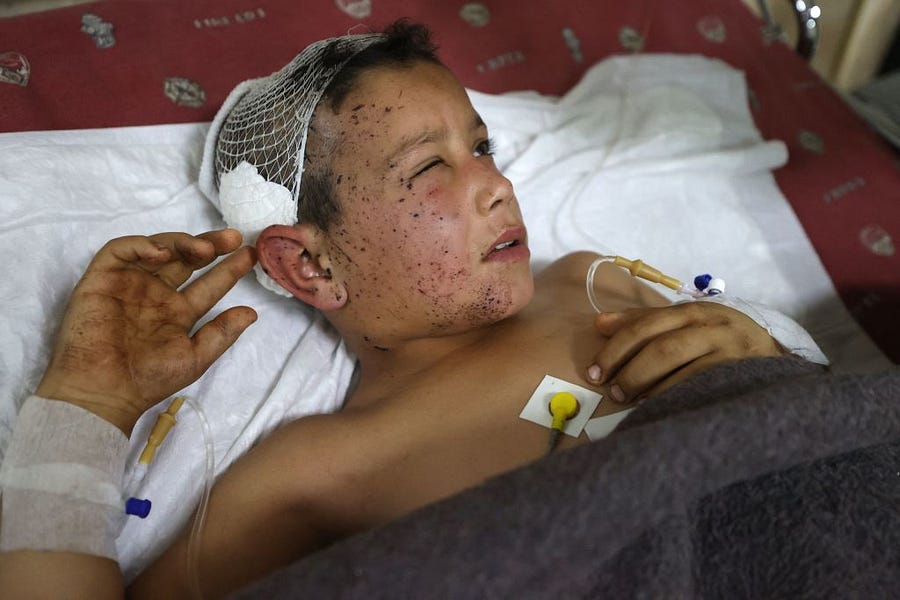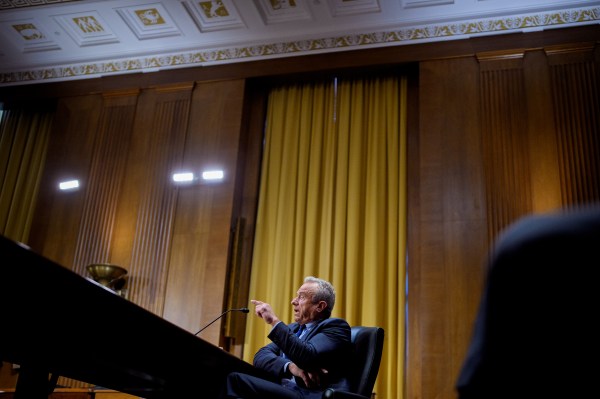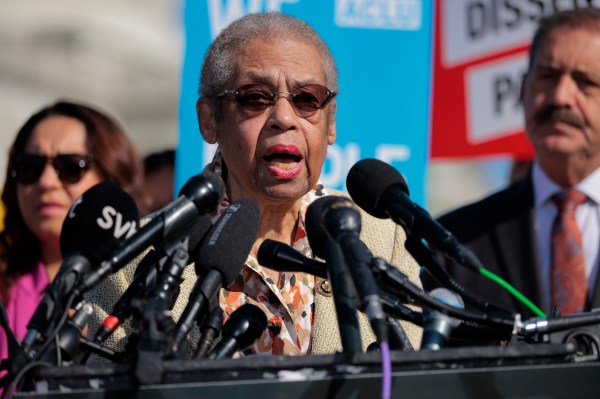On December 3, the U.S. military targeted a suspected “senior al-Qaeda leader and planner” in a drone strike near the city of Idlib in northwestern Syria. The bombing proved to be controversial almost immediately. The alleged jihadist was traveling on a motorbike near a car carrying a family of six, all of whom were wounded in the blast. A 10-year-old boy reportedly suffered the worst injuries, including to his head.
U.S. Central Command (CENTCOM) quickly recognized that the drone strike, launched by a MQ-9 Reaper, may have caused unintended civilian casualties. “We abhor the loss of innocent life and take all possible measures to prevent them,” Capt. Bill Urban, a CENTCOM spokesperson, said in a statement. “We are initiating a full investigation of the allegations and will release the results when appropriate.” Before CENTCOM could release its findings, pictures of the family and their damaged car circulated online, meaning the public could draw its own conclusions.
The U.S. military has hunted senior al-Qaeda personnel in Syria for years, but often provides few details concerning those targeted. This is a problem. Civilians are being killed in U.S. drone strikes in Syria and elsewhere, but the U.S. government often does not provide clear justifications for those bombings in the first place. Sometimes it is clear why an al-Qaeda figure was targeted. On other occasions, however, it isn’t obvious at all.
The December 3 air strike is a case in point. During a press briefing on December 6, Pentagon spokesperson John Kirby explained that the target was a man known as Musab Kinan and he was “a senior leader with Hurras al-Din, which is an al-Qaeda affiliated group.” Other reports disputed this version, saying Kinan was a former member of Hurras al-Din, but not currently active within the organization.
Either way, the truth is we know little about Musab Kinan or why he was targeted. A family was wounded in the bombing, but we have no idea why the U.S. military thought it was necessary to incur this risk.
The U.S. likes to target terrorists driving alone, or with other suspected terrorists. This is suspposed to minimize the risk to others. Kinan was riding alone on a motorcycle. But even in this instance there was the potential to do harm to others nearby. Drone strikes are intended to minimize collateral damage, but even the most careful operator is going to make mistakes and there are going to be unintended consequences.
Hurras al-Din (HAD), meaning the “Guardians of Religion,” is indeed an al-Qaeda group. HAD openly signals its loyalty to al-Qaeda’s top men in its media and messaging. And while Kinan was an obscure figure and previously unknown to the public, other HAD leaders are well-known al-Qaeda veterans.
In early 2018, HAD broke away from the much larger Hay’at Tahrir al-Sham (HTS), which was formerly an official al-Qaeda branch. There is still much we don’t know about the disputes between the two and the role played by al-Qaeda’s senior leadership. But HAD is thought to have a few thousand members in Syria.
Why did Kinan command the U.S. government’s attention? We don’t know. Beyond his alleged role within HAD, the U.S. military hasn’t offered any details concerning his activities. Did he specifically threaten the U.S. or American interests in some fashion? Again, we don’t know.
And this isn’t the first time the U.S. has offered little information about a target in Syria or elsewhere.
In September, CENTCOM said it targeted another senior “senior al-Qaeda leader” in Idlib, Syria. “Initial indications are that we struck the individual we were aiming for, and there are no indications of civilian casualties as a result of the strike," LT Josie Lynne Lenny said in a statement. That was it – no other information was provided. We learned the identity of the target, another HAD figure, only because jihadists discussed the airstrike on social media.
In October, the U.S. killed still another “senior al-Qaeda leader” in a MQ-9 Reaper strike in Syria. That jihadist was identified as a man known as Abdul Hamid al-Matar. CENTCOM’s announcement provided a bit more justification for targeting al-Matar, but still offered only generalities. CENTCOM explained that al-Qaeda “continues to present a threat to America and our allies” and is using “Syria as a safe haven to rebuild, coordinate with external affiliates, and plan external operations.”
“Al-Qaeda also uses Syria as a base for threats reaching into Syria, Iraq and beyond,” the statement read. “The removal of this al-Qaeda senior leader [al-Matar] will disrupt the terrorist organization’s ability to further plot and carry out global attacks threatening U.S. citizens, our partners, and innocent civilians.”
Still, the U.S. military didn’t elaborate on Abdul Hamid al-Matar’s specific role within al-Qaeda, or why he was thought to present a threat to Americans.
The media and various non-governmental organizations understandably scrutinize American airstrikes for civilian casualties. In September, the New York Times reported that the U.S. military’s airstrike in Kabul during America’s chaotic withdrawal hadn’t killed an ISIS planner, as the government claimed, but instead an innocent man and his family. Only then did the U.S. military admit it was a “tragic mistake.” Two months later, the New York Times reported that dozens of civlians were killed when the U.S. bombed one of the Islamic State’s last strongholds in Baghuz, Syria in March 2019. This prompted CENTCOM to acknowledge the misbegotten strikes “for the first time.”
But there is another aspect of America’s ongoing drone campaign that deserves additional scrutiny. The U.S. government does an exceptionally poor job of explaining al-Qaeda to the public. So we often don’t know much about the alleged terrorists who are being hunted in the first place.






Please note that we at The Dispatch hold ourselves, our work, and our commenters to a higher standard than other places on the internet. We welcome comments that foster genuine debate or discussion—including comments critical of us or our work—but responses that include ad hominem attacks on fellow Dispatch members or are intended to stoke fear and anger may be moderated.
With your membership, you only have the ability to comment on The Morning Dispatch articles. Consider upgrading to join the conversation everywhere.